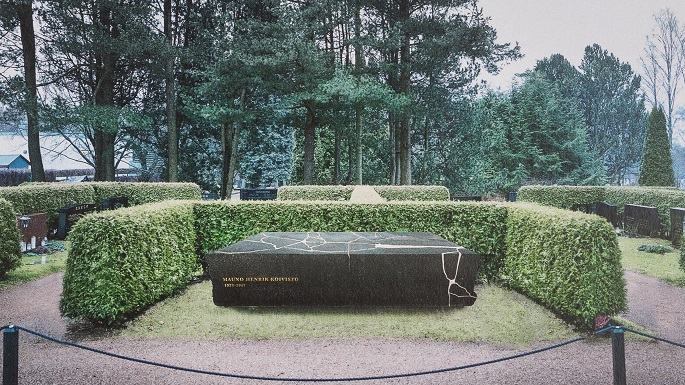Koivisto’s cenotaph to be unveiled on Nov 25
Published : 12 Nov 2018, 18:05
Updated : 13 Nov 2018, 11:03
The cenotaph for former president Mauno Koivisto at the Hietaniemi Cemetery in Helsinki will be unveiled on November 25, said a government press release on Monday.
The cenotaph was designed by Perttu Saksa, an artist cum photographer. The cenotaph will be unveiled on the late president’s anniversary of birth.
The event will be attended by Koivisto’s family members, President Sauli Niinistö and First Lady Jenni Haukio, Prime Minister Juha Sipilä, and representatives of the government and parliament, among others.
The unveiling ceremony will begin with Jean Sibelius’ Isänmaalle (To the Fatherland) to be performed by the Guards Band, followed by a speech by Prime Minister Sipilä. President Niinistö will deliver the unveiling remarks, and Bishop Eero Huovinen will read a prayer.
The YL Male Voice Choir will perform the Suomen laulu (Song of Finland) by Fredrik Pacius.
The attendees at the ceremony will join in singing the Hymn 548, Tule kanssani, Herra Jeesus (Come With Me, Lord Jesus), followed by the Finlandia Hymn by Jean Sibelius, to close the event.
YLE will broadcast the event live on Yle TV1 and Areena starting at 11:50am.
Mauno Henrik Koivisto was the president of the Republic of Finland for 12 years, from 1982 to 1994. He was Finland’s ninth president. Koivisto’s state funeral was held on 25 May 2017.
At the start of January 2018, the Prime Minister’s Office announced a competition for the design of the cenotaph for the late president. A total of 138 proposed designs were received by the closing date. The winner of the competition was announced in April 2018.
The jury described the winning entry ‘Kartta’ by Perttu Saksa, as follows: “This entry consists of pieces held together by gilding. It is a magnificent ensemble. While the proposal can be seen to meld with ceramics, emphasising humility and dignity or fragmented world politics, the design is first and foremost an independent, multi-vocal tribute to unity. Erosion has ground down the stone into separate pieces, while the reconstructed arrangement is not only more humane but also much more than the original perfection. The size and dimensions of the proposal are positioned with style on the grave site, and its dual and natural shape, with plasticity, circumvents excessive simplicity.”


